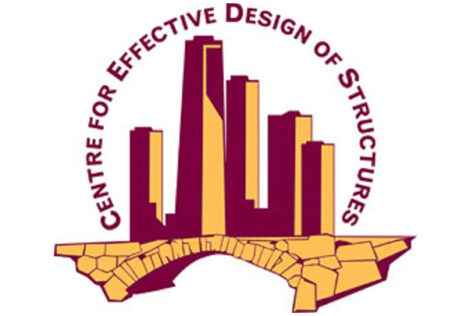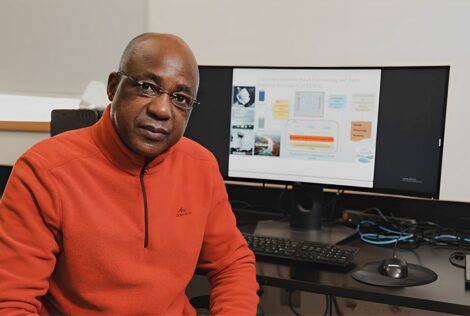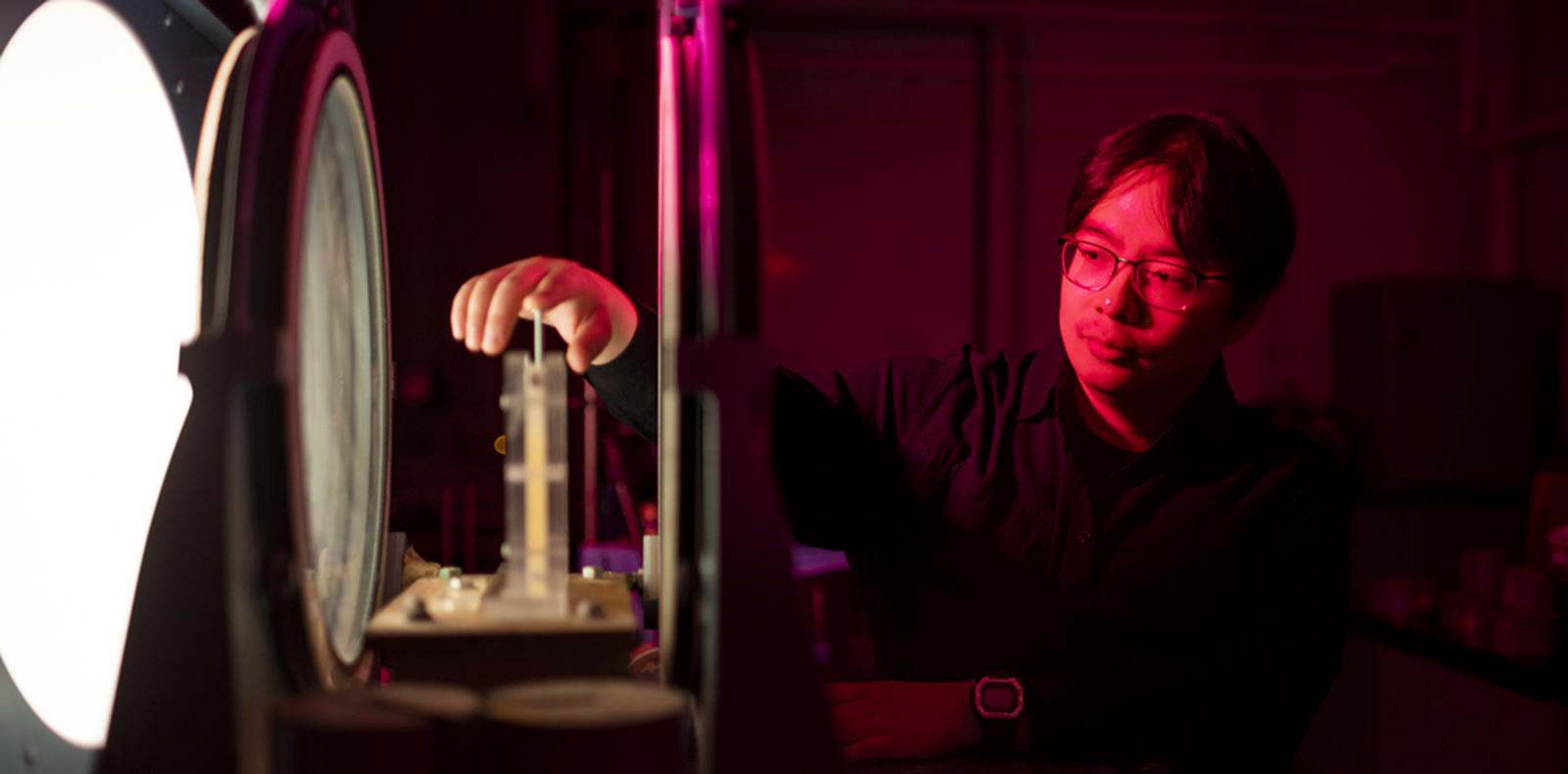
Affiliated centres, institutes and facilities
In the department of Civil Engineering, affiliated centres, institutes and facilities contribute to the overall academic environment by serving as spaces for conducting research, organizing activities and providing additional resources and cutting-edge equipment for students and faculty. These hubs are places for knowledge creation and application, emphasizing collaboration and shared goals.
-

Centre for Effective Design of Structures
Learn more about the centreThe Centre for the Effective Design of Structures is focused on the following four research areas: masonry materials, design and construction; earthquake engineering; investigation and remediation of structures; and enhanced use of new and under-utilized materials.
The centre partners with private and public sectors in the research and development of cost-effective construction products and techniques through sponsored and collaborative research.
-

Floodnet
Learn more about FloodNet (Opens in new window)FloodNet focuses on developing advanced knowledge, tools, and technologies that will allow Canada to better face the reality of floods and serves as a vehicle for a concerted nationwide effort to enhance flood forecasting and management capacity within Canada. To achieve the network vision, FloodNet addresses complex fundamental and applied research problems, which are grouped into four inter-related research themes: Flood Regimes in Canada: Learning from the Past and Preparing for the Future; Quantifying and Reducing the Predictive Uncertainty of Floods; Development of Canadian Adaptive Flood Forecasting and Early Warning System (CAFFEWS); and Risk Analysis of Physical, Socio-Economic, and Environmental Impacts of Floods.
The Natural Sciences and Engineering Research Council (NSERC) CaNRisk Collaborative Research and Training Experience (CREATE) program aims at generating crucial interdisciplinary knowledge that will continue to be in demand especially as Canada’s dependence on fossil fuels is reduced. Through its knowledge mobilization approach from the academia to industrial applications, the program will position Canada as the world leader in nuclear infrastructure resilience under extreme events and develop the next generation of industry leaders in Canada and internationally.
Nuclear infrastructure systems across the globe are made up of a network of interconnected and interdependent systems. Global disasters have demonstrated the need for a disruptive vision to create innovative, holistic and interdisciplinary solutions. Experts from different fields must work together to mitigate seismic risk to the global nuclear infrastructure. This approach will drive our team’s mission to train the next generation of experts to ensure nuclear infrastructure systems are resilient under cascading hazards.
Director(s)
Dr. Wael El-Dakhakhni
Professor
eldak@mcmaster.ca
1-905-525-9140 ext. 26109
The interface institute is focused on integrating research on multi-hazard, interdependence and system-level risk to address societal grand challenges with respect to natural, built and cyber infrastructure systems. The institute is a multi-disciplinary platform for knowledge mobilization across the tri-council agencies and has members from across the university who specialize in studying different forms of hazards, component and system vulnerabilities, as well as system interdependencies and risk evaluation.
Director(s)
Dr. Wael El-Dakhakhni
Professor
eldak@mcmaster.ca
1-905-525-9140 ext. 26109
MITL is a non-profit organization of private and public sector investors created to work with business and government partners to address real challenges facing the industry and to bring together resources, expertise and experience that the industry does not have but desperately needs. The goal: to improve the efficiency of transportation systems and the competitiveness of the logistics/manufacturing sector. In a nutshell, MITL is dedicated to solving transportation and logistics problems to make our world work better. MITL is supported by its partners in industry, government and academia.
MITL is committed to addressing issues of environmental and social concerns. Climate change and environmental emissions are intertwined with economic prosperity and must be considered for the future sustainability of both the industry and the planet. It’s a win-win for all and it’s good business.
The objective of MITL is to connect with government, industry partners and academia in addressing critical transportation and logistics issues. Our key focus areas are: research, education and outreach.
Director(s)
Dr. Saiedeh Razavi
Professor
razavi@mcmaster.ca
1-905-525-9140 ext. 27155
Constructed in 1965 and located on the west campus, the Applied Dynamics Lab (ADL) is the centre for large-scale structural engineering and experimental research at McMaster. The lab is designed with a cellular box foundation and a strong, reinforced main-floor that provides 300 square meters of workspace with additional lab and office space available on other levels. The special design features make the lab a particularly suitable facility for large scale structural experimental research. Clear head room of over 12 m beneath a 10-tonne overhead crane permit full scale and scaled-models testings of structures or structural components. The main loading system is a 1460 kN static/1000 kN dynamic MTS servo-controlled hydraulic system equipped with a range of actuator capacities and load cells. This system is also used to power horizontal and vertical shake tables for seismic engineering studies. In addition to a selection of hydraulic jacks and computer-controlled data acquisition equipment, 2 fixed in-plane test machines with 250 kN and 550 kN capacities are available.
Undergraduate courses include labs located in the ADL focusing on: asphalt, surveying, concrete design, beams and columns, re-enforced concrete, stress and strain in structures.
Current research is conducted on topics such as: earthquake damage prevention and remediation, repair/remediation of cracked concrete, blast resistance of surface and waterborne structures, blast/shock simulation, non-traditional concrete and masonry, re-enforcement, wind/storm loading of structures, tuned mass damper and environmental/water remediation.
JHE 114
The Geotechnical laboratories are equipped with triaxial (vacuum and unconfined), direct shear and consolidation testing equipment as well as pore water pressure analysis. An MTS loading system is available for the cyclic or dynamic testing of soils. Computing facilities are available for finite element computations.
The Highway Materials Laboratory is equipped for the characterization of a range of materials such as aggregates, asphalt cements, Portland cements and slags.
There is collaboration in research between the Structural and Geotechnical faculty with shared facilities and co-supervision of students.
The focus of research activity within the geotechnical group is computational mechanics. Projects include constitutive modelling of geomaterials, rehabilitation of dams, soil-pipeline interaction, liquefaction of soils during earthquake loading, and soil-structure interaction, including the behaviour of pavement structures to dynamic loading.
The group has also been involved in research dealing with modelling of masonry, reinforced concrete, biomechanics, and industrial processes such as polymer films and behaviour of electrodes in electric arc furnaces.
Geotechnical Engineering lab
JHE 121 is a new lab space for the undergraduate labs related to fluid dynamics and structural mechanics. Lab equipment includes hydraulic tables for experimentation with orifice flow, hydrostatic pressure, fluid momentum, Bernoulli’s principle, centre of pressure and open channel flow.
This lab also contains the equipment for the undergraduate structural mechanics lab related to shear centre testing and unsymmetrical bending.
JHE 223
Laboratory space is available for conducting bench-scale experimental studies, including temperature-controlled chambers. A range of analytical equipment supports both in-house and field investigation, gas chromatographs, ion chromatograph, total carbon analyzer, TRAACS auto-analyzer, scanning UV spectrophotometer, Hach portable laboratory, refrigerated centrifuge, etc. The laboratory has both bench- and pilot-scale unit processes for water and wastewater treatment and is equipped for a range of wet chemistry analyses. Extensive experimental facilities and support are available through Environment Canada’s National Water Research Institute and Wastewater Technology International Corp. in Burlington.
In addition to the University-based computing resources, graduate students have access to a variety of specialized computational tools. Hardware consists of Sun Sparcstations, Macintoshes and IBM-compatible personal computers, all of which are linked to the campus Ethernet. In addition, a state-of-the-art hardware/software video imaging system is utilized in studies of environmental hydraulics. There are also microcomputer and workstation facilities for the application of environmental information systems (EIS) methodologies to water resources and global climate change problems, and GIS modeling approaches are used to develop decision support systems for municipal solid waste management planning and for the design of sustainable communities.





